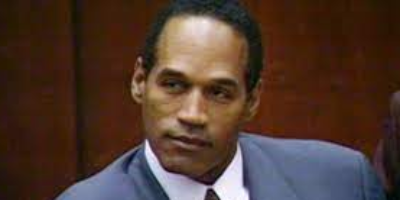9 h 45 min, 31 août 1995 ans - Judge Ito's final ruling on Fuhrman Tapes, part 1
Description:
Ito's Final Decision on the Fuhrman TapesSUPERIOR COURT OF THE STATE OF CALIFORNIA IN AND FOR THE COUNTY OF LOS ANGELES
Date: 31 August 1995
Department 103
Hon. Lance A Ito, Judge
Deidre Robertson, Deputy Clerk
People v. Orenthal James Simpson
Case # BA097211
FUHRMAN TAPES
The court has read and considered the Defense Offer Of Proof Re: "Fuhrman Tapes", the amendments to the original offer of proof, the responses filed by the prosecution, listened to the redacted audio tapes, read and considered the multiple transcripts of the redacted audio tapes, and heard the argument of counsel.
The Fuhrman tapes and transcripts raise a number of complex and compelling issues. This court's focus, however, is legally restricted to just two issues:
1) Is Orenthal James Simpson guilty of the murders of Ronald L. Goldman and Nicole Brown Simpson, and
2) How should these tapes impact upon the testimony by and about now retired Los Angeles Police Department Detective Mark Fuhrman.
A key part of the defense case is the allegation that Fuhrman, motivated by hatred of blacks/ African Americans and interracial couples, transported a bloody leather glove from the Bundy crime scene to the defendant's Rockingham residence for the purpose of placing the blame upon the defendant for the savage murders of Ronald L. Goldman and Nicole Brown Simpson. In an earlier related ruling issued 20 January 1995, this court tentatively ruled that the defense may present the testimony of one Kathleen Bell concerning sometime between 1985 and 1986:
The Redondo Beach incident occurred sometime between 1985 and 1986. It is alleged that Fuhrman made a comment from which one might infer racial animus, contempt of interracial couples and willingness to manufacture probable cause to stop a motor vehicle. (1) It has been agreed by the parties that defendant is African-American and victim Nicole Brown Simpson was Caucasian. It would also appear from this record that Fuhrman had met defendant and Brown Simpson on one memorable prior occasion in 1985. (2) Assuming Bell's statement to be true, a direct inference of a credibility problem is apparent. If the defendant can make an offer of proof as to what evidence they will produce to suggest the moving of evidence and the court is satisfied by that offer of proof, the prosecution's objections will be denied.
It is important to note that the basis of the 20 January 1995 ruling was 1) the unique combination of racial animus, interracial couples and a willingness to fabricate, and 2) the Kathleen Bell offer of proof which included all three elements. During the course of the presentation of the prosecution's case in chief, Fuhrman testified without objection that he had not used a particular racial epithet in the past ten years.
The defense proffers include 41 examples of Fuhrman using the particular racial epithet in question and 18 examples of misconduct argued to be relevant on the issue of Fuhrman's credibility and willingness to fabricate. The defense also offers 2 comments made by Fuhrman in late July of 1994 which are argued to be relevant to Fuhrman's attitude towards testifying as a witness. See Evidence Code Section 780 (j). Interestingly, the proffers do not address what evidence supports the allegation that the Rockingham glove was moved. (3) The court therefore has 61 incidents to evaluate.
Foundation Testimony By McKinny
Laura Hart McKinny testifies that in 1985 she was engaged in writing a screenplay about women in police work when she met Fuhrman at a restaurant in Westwood. Upon learning Fuhrman was a police officer with strong negative feelings about women in police work, McKinny agreed to use Fuhrman as a technical consultant, eventually agreeing to pay Fuhrman ten thousand dollars ($10,000.00) upon the sale of the screenplay. McKinny testifies that her conversations with Fuhrman were for research purposes, to provide realistic dialogue, proper police procedures and insights into a police officer's thought process. The basic story to be told was that of a competent woman police officer who is transferred into a police division patterned after LAPD's 77th Street Division, and partnered with another officer who is a member of MAW (Men Against Women) and opposed to women being police officers.
McKinny testified that racial tensions were not a subplot of her intended and eventual screenplay. McKinny testified that she would tape record portions of her conversations with Fuhrman, and that she would transcribe those recorded conversations within a day or two of each interview. (4) McKinny was adamant that her screenplay was intended as a fictional work. Although the screenplay has been optioned, it has not bee purchased as of 28 August 1995.
Ajouté au bande de temps:
Date:
9 h 45 min, 31 août 1995 ans
Maintenaint
~ Il y a 30 ans
